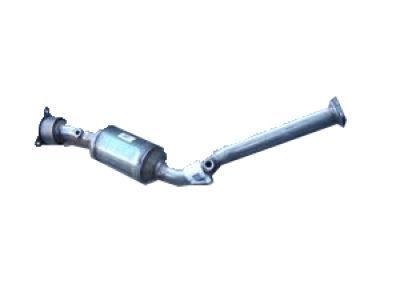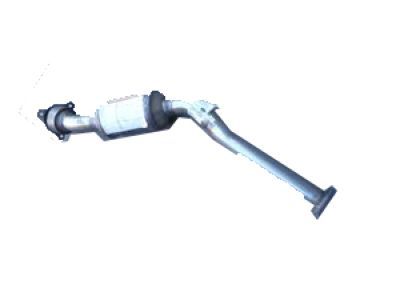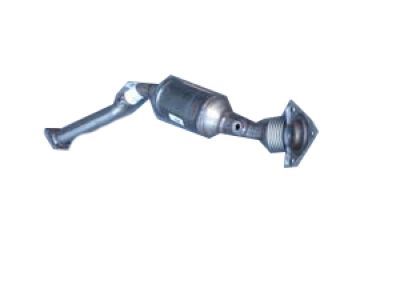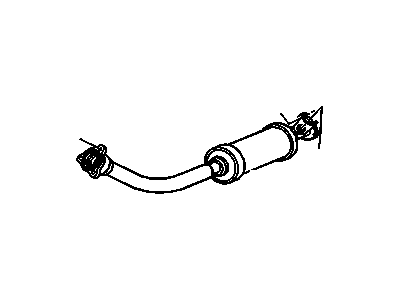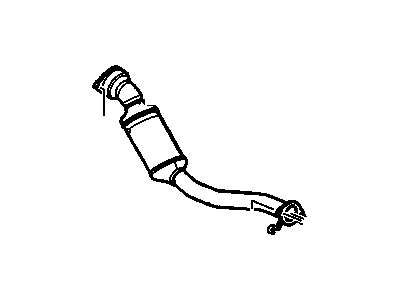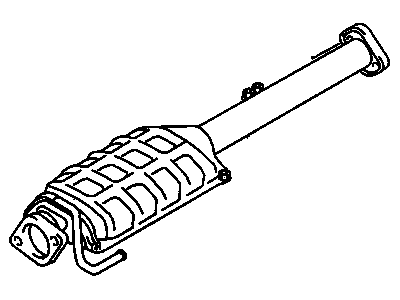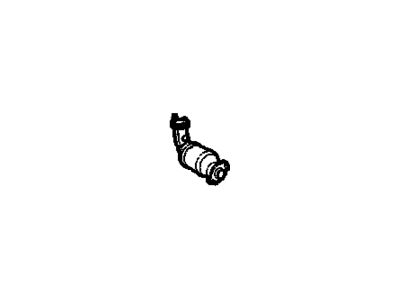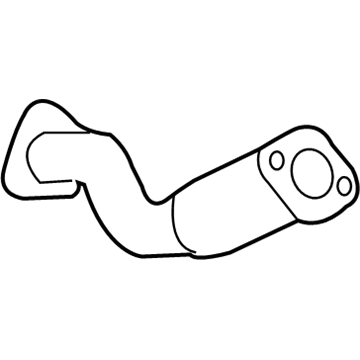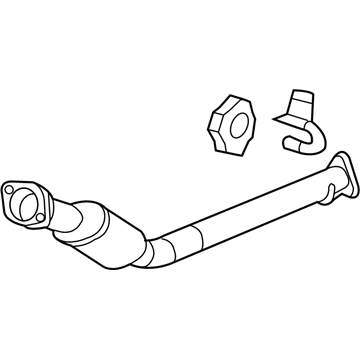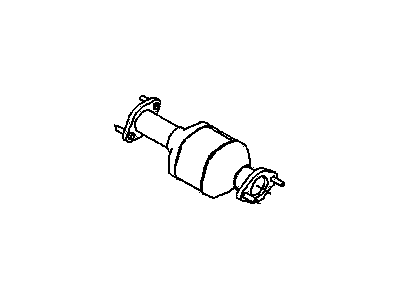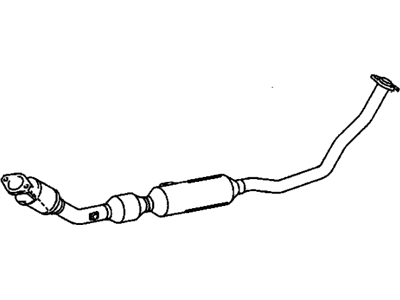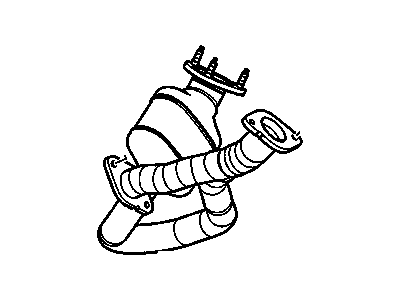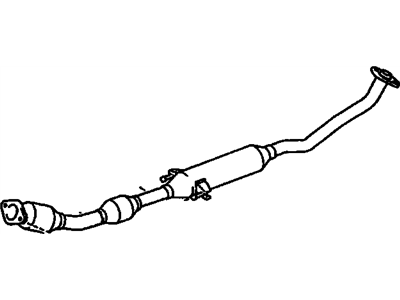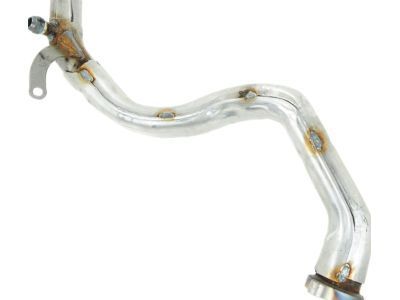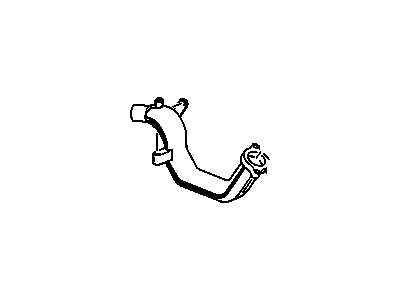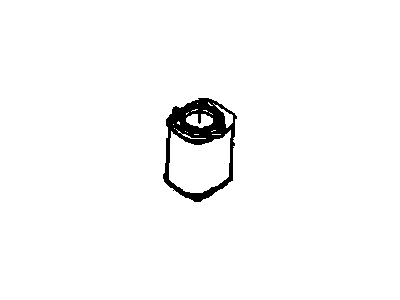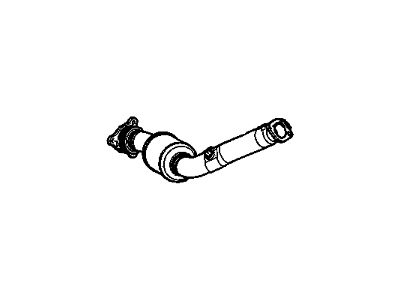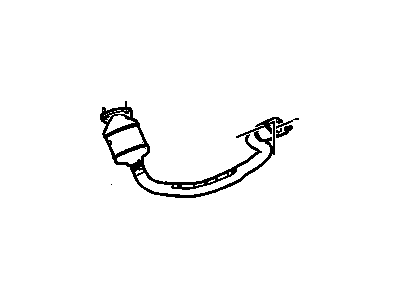
My Garage
My Account
Cart
Genuine Pontiac Catalytic Converter
Cat. Converter- Select Vehicle by Model
- Select Vehicle by VIN
Select Vehicle by Model
orMake
Model
Year
Select Vehicle by VIN
For the most accurate results, select vehicle by your VIN (Vehicle Identification Number).
228 Catalytic Converters found
Pontiac 3Way Catalytic Convertor Assembly (W/Exhaust Manifold Pip)
Part Number: 22970504$1480.02 MSRP: $2219.63You Save: $739.61 (34%)Ships in 1-3 Business DaysProduct Specifications- Other Name: Converter Assembly, 3Way Catalytic (W/Exhaust Manifold Pip); Catalytic Converter, Converter & Pipe
- Replaces: 15247469, 22703213, 15873731
Pontiac 3Way Catalytic Convertor Assembly (W/ Exhaust Manifold P)
Part Number: 15861401$1037.49 MSRP: $1552.17You Save: $514.68 (34%)Ships in 1-3 Business DaysProduct Specifications- Other Name: Converter Assembly, 3Way Catalytic (W/ Exhaust Manifold P); Catalytic Converter, Converter & Pipe
Pontiac 3Way Catalytic Convertor Assembly (W/ Exhaust Manifold P)
Part Number: 10310528$885.06 MSRP: $1665.07You Save: $780.01 (47%)Product Specifications- Other Name: Converter Assembly, 3Way Catalytic (W/ Exhaust Manifold P); Catalytic Converter, Converter & Pipe
- Replaces: 12564330
Pontiac 3Way Catalytic Convertor (W/Exhaust Manifold Pipe)
Part Number: 92201316$1499.65 MSRP: $1931.17You Save: $431.52 (23%)Product Specifications- Other Name: Converter,3Way Catalytic(W/Exhaust Manifold Pipe); Catalytic Converter, Converter & Pipe
Pontiac CONVERTER ASM,3WAY CTLTC (W/EXH MANIF PIPE) "KIT"
Part Number: 19418970$1082.11 MSRP: $2074.80You Save: $992.69 (48%)Ships in 1-3 Business DaysProduct Specifications- Other Name: Catalytic Converter, Converter & Pipe
- Replaces: 25937659, 20847946
Pontiac CONVERTER ASM,3WAY CTLTC (W/EXH MANIF PIPE) "KIT"
Part Number: 19420104$1008.28 MSRP: $1508.11You Save: $499.83 (34%)Ships in 1-3 Business DaysProduct Specifications- Other Name: Catalytic Converter, Converter & Pipe
- Replaces: 15286601
Pontiac Catalytic Convertor
Part Number: 96803246$204.41 MSRP: $294.32You Save: $89.91 (31%)Ships in 1-3 Business DaysProduct Specifications- Other Name: Converter Pkg,3Way Catalytic ; Converter, Catalytic Converter; Catalytic Converter
Pontiac 3Way Catalytic Convertor (W/Exhaust Manifold Pipe & Resonator)
Part Number: 88975825$642.67 MSRP: $956.67You Save: $314.00 (33%)Ships in 1-3 Business DaysProduct Specifications- Other Name: Converter,3Way Catalytic(W/Exhaust Manifold Pipe & Resonator); Catalytic Converter, Converter & Pipe
Pontiac 3Way Catalytic Convertor Assembly (W/ Exhaust Manifold P)
Part Number: 15861399$1884.08 MSRP: $2838.58You Save: $954.50 (34%)Product Specifications- Other Name: Converter Assembly, 3Way Catalytic (W/ Exhaust Manifold P); Catalytic Converter, Converter & Pipe
Pontiac 3Way Catalytic Convertor Assembly (W/ Exhaust Manifold P)
Part Number: 22939742$1248.81 MSRP: $1870.90You Save: $622.09 (34%)Ships in 1-3 Business DaysProduct Specifications- Other Name: Converter Assembly, 3Way Catalytic (W/ Exhaust Manifold P); Catalytic Converter, Converter & Pipe
- Replaces: 15889901
Pontiac 3Way Catalytic Convertor Assembly (W/ Exhaust Manifold P)
Part Number: 22939746$1267.40 MSRP: $1898.95You Save: $631.55 (34%)Ships in 1-3 Business DaysProduct Specifications- Other Name: Converter Assembly, 3Way Catalytic (W/ Exhaust Manifold P); Catalytic Converter, Converter & Pipe
- Replaces: 15905996
Pontiac 3Way Catalytic Convertor Assembly (W/ Exhaust Manifold P)
Part Number: 20889269$1447.58 MSRP: $1977.57You Save: $529.99 (27%)Ships in 1-2 Business DaysProduct Specifications- Other Name: Converter Assembly, 3Way Catalytic (W/ Exhaust Manifold P); Catalytic Converter, Converter & Pipe
- Replaces: 15147065
Pontiac 3-Way Catalytic Convertor (W/ Exhaust Rear Manifold Pipe)
Part Number: 10379411$849.34 MSRP: $1268.39You Save: $419.05 (34%)Ships in 1-3 Business DaysProduct Specifications- Other Name: Converter Asm 3Way Catalytic (W/ Exhaust Rear Mani ; Converter, Catalytic Converter); Catalytic Converter, Converter & Pipe
- Position: Rear
Pontiac 3Way Catalytic Convertor (W/Exhaust Manifold Pipe)
Part Number: 88973519$1242.33 MSRP: $1861.13You Save: $618.80 (34%)Ships in 1-3 Business DaysProduct Specifications- Other Name: Converter,3Way Catalytic(W/Exhaust Manifold Pipe)
- Replaced by: 19205435
Pontiac Exhaust Crossover Pipe Assembly (W/Heat Shield)
Part Number: 24503125$435.55 MSRP: $654.11You Save: $218.56 (34%)Ships in 1-3 Business DaysProduct Specifications- Other Name: Pipe Assembly, Exhaust Crossover (W/Heat Shield) ; Pipe, Exhaust Pipe
Pontiac Exhaust Manifold Pipe Assembly Front
Part Number: 12564240$61.64 MSRP: $92.15You Save: $30.51 (34%)Product Specifications- Other Name: Pipe Assembly, Exhaust Manifold Front
- Position: Front
- Replaces: 12556489
- Product Specifications
- Other Name: Converter Asm,Oxidation Catalytic (Goodwrench) ; Converter, Catalytic Converter; Catalytic Converter, Converter
Pontiac 3Way Catalytic Convertor Assembly (W/Exhaust Manifold Pip)
Part Number: 22970500$1014.34 MSRP: $1517.25You Save: $502.91 (34%)Product Specifications- Other Name: Converter Assembly, 3Way Catalytic (W/Exhaust Manifold Pip); Catalytic Converter, Converter & Pipe
- Replaces: 22695582, 15247471
Pontiac 3-Way Catalytic Convertor (W/ Exhaust Rear Manifold Pipe)
Part Number: 19169178$728.36 MSRP: $1085.92You Save: $357.56 (33%)Product Specifications- Other Name: Converter Asm 3Way Catalytic (W/ Exhaust Rear Manifold Pipe) ; Converter, Catalytic Converter; Converter & Pipe
- Position: Rear
- Replaces: 19169175, 22726989, 19169173, 22729238
Pontiac 3Way Catalytic Convertor Assembly
Part Number: 12609726$340.41 MSRP: $498.52You Save: $158.11 (32%)Product Specifications- Other Name: Converter Assembly, 3Way Catalytic; Catalytic Converter, Converter & Pipe
- Replaces: 12562398
| Page 1 of 12 |Next >
1-20 of 228 Results
Pontiac Catalytic Converter
If you're searching for OEM Pontiac Catalytic Converters, look no further. Our website boasts an extensive inventory of genuine Pontiac Catalytic Converters, all available at competitive prices online. Every part we offer comes with a manufacturer's warranty. In addition, we provide a straightforward return policy and rapid delivery services, making your shopping experience a breeze.
Pontiac Catalytic Converter Parts Questions & Experts Answers
- Q: What is the function and importance of a catalytic converter on Pontiac Fiero?A:It is implemented in the exhaust system to reduce the emissions and the current model is a single bed converter using a three way catalytic system. The catalytic coating of this catalyst is made of platinum and rhodium and it has the potential of decreasing the emissions of nitrogen oxides, hydrocarbons and carbon monoxide. Street and lab testing of catalytic converters is expensive and cumbersome and thus when there is suspicion of failure, should be diagnosed and repaired by a dealer or an authorized emission testing center. Located beneath the car and just ahead of the engine, the converter should be checked for signs of leakage, rust or other signs of damage whenever the car is being serviced for purposes of undercarriage maintenance. If any damage is seen, it cannot be unbolted and replaced; it must be cut out with a torch because it is welded to the exhaust pipes-really a replacement job that must be handled by a dealer service department or a muffler shop that has the capability to cut out the converter.
Related Pontiac Parts
Browse by Model
6000 Catalytic Converter Aztek Catalytic Converter Bonneville Catalytic Converter Fiero Catalytic Converter Firebird Catalytic Converter G3 Catalytic Converter G5 Catalytic Converter G6 Catalytic Converter G8 Catalytic Converter GTO Catalytic Converter Grand Am Catalytic Converter Grand Prix Catalytic Converter J2000 Catalytic Converter LeMans Catalytic Converter Montana Catalytic Converter Parisienne Catalytic Converter Phoenix Catalytic Converter Pursuit Catalytic Converter Safari Catalytic Converter Solstice Catalytic Converter Sunbird Catalytic Converter Sunfire Catalytic Converter Sunrunner Catalytic Converter T1000 Catalytic Converter Torrent Catalytic Converter Trans Sport Catalytic Converter Vibe Catalytic Converter
